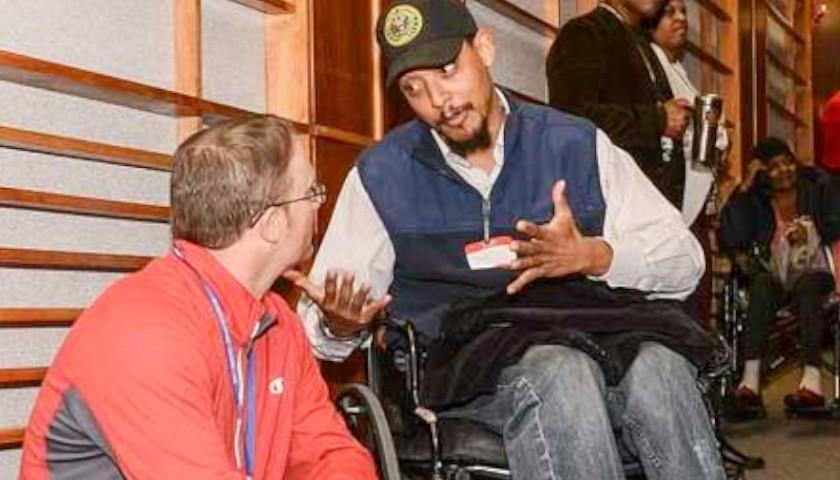Unlike other legal immigrants admitted to the U.S., refugees including those that settle in Ohio, are not barred by immigration-related waiting periods before applying for state Medicaid programs. Even though refugees must meet all Medicaid eligibility requirements in order to receive coverage and services, available data strongly suggests that refugee Medicaid enrollment in Ohio is likely high.
Ohio’s Medicaid program is funded through a dollar match of approximately two federal dollars for each state dollar appropriated.
In 2013, Governor Kasich accepted the ObamaCare Medicaid expansion funds which in no time, brought more than 700,000 newly eligible enrollees into the program. Kasich’s decision to expand Medicaid increased enrollment for more immigrants.
Unlike Ohio’s Medicaid healthcare coverage that must be provided to anyone who satisfies eligibility requirements, the state’s Medicaid Waiver program for Home & Community Based long-terms services and supports for individuals with developmental and intellectual disabilities (what used to be referred to as mental retardation), is limited to whatever level of state and local funding is made available.
The lack of adequate funding to help people with developmental and intellectual disabilities live in their communities as opposed to institutional care, means that some of the most vulnerable Ohioans remain on a waiting list for services for many years. According to the Center for Community Solutions, as of July 2018, Ohio’s waiting list has grown to over 48,000 people. Some groups claim that the waiting list provides a skewed picture of need since it includes individuals who are not in immediate need of services.
Even though steps have been initiated to address Ohio’s trend of segregating individuals with developmental and intellectual disabilities in institutional settings and sheltered workshops, it is forecasted that it will be many years before the model shifts to community integration with sufficient resources to support the change.
Because Ohio has annually been among the top ten receiving states for refugees who are typically high users of state Medicaid programs, it remains unlikely that any substantial state resources will be available to remedy the waiting list issue for individuals with developmental and intellectual disabilities.
The Ohio Department of Job and Family Services (ODJFS) oversees the state’s Refugee Services. Even though ODJFS insists that all refugee services are “100% federally funded,” the department’s website confirms that only refugees who are not eligible for the state’s Medicaid program, will receive a federal eight-month refugee medical assistance subsidy. ODJFS admits that, “[a]fter refugee medical assistance is no longer available, refugees may be eligible for health care coverage under Medicaid.”
The federal government has acknowledged in multiple documents that it has shifted certain costs of the federal refugee resettlement program onto states, including the long-term costs of state Medicaid programs. For several years after Congress passed the Refugee Resettlement Act of 1980, it reimbursed states 100% of the state cost of Medicaid, but over time, failing to appropriate sufficient funds, Congress passed the cost to the states.
The refugee Medicaid cost-shifting issue is central to Tennessee’s Tenth Amendment lawsuit against the federal government. Data provided to The Tennessee Star by State Senator Bill Ketron’s office showed that “in FY2010, federal contractors resettled 1,734 refugees in Tennessee and 1,157 in FY2011. Forty-eight percent of the refugees arriving in 2010 and 58 percent arriving in 2011, were assisted by refugee contractors to enroll into TennCare [the state’s Medicaid program].”
While similar data is not currently available for refugee enrollment in Ohio Medicaid, annual U.S. Office of Refugee Resettlement (ORR) reports show both very high numbers of refugee resettlement to the state, relatively low levels of employment and low average wages from refugee caseloads and even lower percentages of refugees employed with health benefits.
For example, in FY2014 ORR reported that Ohio received 3,000 primary refugees representing 4% of the total number of refugees admitted during that fiscal year. Refugee caseloads increased from 2,523 in FY2013 to 2,982 in FY2014, with only 849 entering employment in the FY2013 and 953 in the following fiscal year – barely one-third of each year’s caseload. Average wages were reported at $8.82 and $9.46 respectively and for purposes of estimating high refugee reliance on Medicaid, only 208 and 243 of the respective year’s caseloads of thousands, were reported to have employer-provided health benefits.
In FY2015, Ohio remained in the top ten receiving states with 2,989 arriving refugees representing 4% of the total U.S. arrivals that year. The ORR Annual Survey of Refugees, a self-reporting survey, included data that of the refugee arrivals between 2011 – 2015, overall Medicaid and RMA, the eight-month federal subsidy, enrolled 49.4% of all refugees. The survey data also showed a breakdown of Medicaid/RMA reliance by refugee group. Of the 323 Bhutanese households that responded to the survey, 29.8% confirmed Medicaid/RMA use and of the 226 Somali households responding, 60.4% reported reliance on Medicaid/RMA.
The Ohio Star has previously reported on the very high number of Bhutanese and Somali refugees living in Ohio.
The last available ORR report in FY2016 shows that Ohio increased its refugee arrivals to 4,194 representing 5% of total U.S. refugee arrivals that year. Out of the 2,690 employment caseload, 1,147 were reported to have entered employment with an average wage of $9.50 with over 1,000 having employment-offered health benefits offered. The numbers do not, however, indicate whether the health benefits were accepted but do show that only 490 job retentions were reported. Overall Medicaid/RMA reliance of 34.4% of the 2,887 refugees surveyed was reported.
In 2016, Disability Rights Ohio sued Governor Kasich alleging that Ohio’s failure to adequately provide the Medicaid Waivers for Home and Community Based long-term services and supports for individuals with disabilities, violates the Americans with Disabilities Act. According to Disability Rights Ohio:
Hundreds, if not thousands, of Ohioans with developmental disabilities who currently live in institutions want to move into their communities. And many of approximately 6,000 Ohioans with developmental disabilities currently in institutions have never been told that living in the community is even an option. Thousands more have asked for home- and community-based services but remain on waiting lists for years. Many of these individuals face the risk of being moved to an institution because they cannot access the home- and community-based services they need.
At Disability Rights Ohio, we believe that this case centers on freedom of choice. When people with developmental disabilities ask for help and are given no other option but to live in an institution, away from their families and friends, that is segregation.
As it stands in Ohio, however, refugees in the state have more rights and likely more readily available Medicaid funding that Ohioans with developmental and intellectual disabilities.
– – –
Chris Alto is an investigative reporter at The Ohio Star.






[…] Ohio Star in September 2018 reported how refugees are qualifying for Medicaid disability benefits even as many Ohioans wait for years to […]
[…] Ohio Star in September 2018 reported how refugees are qualifying for Medicaid disability benefits even as many Ohioans wait for years to […]